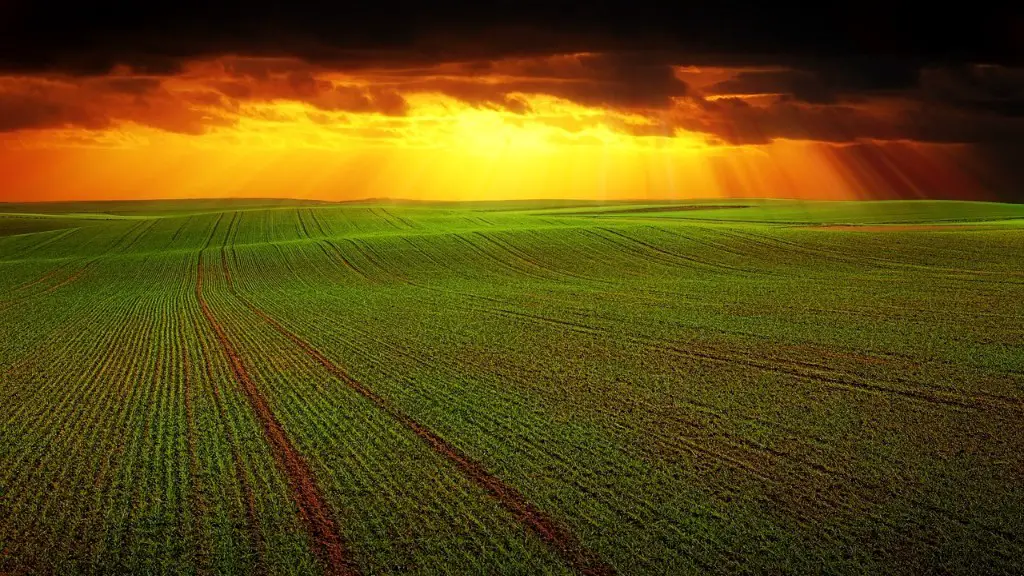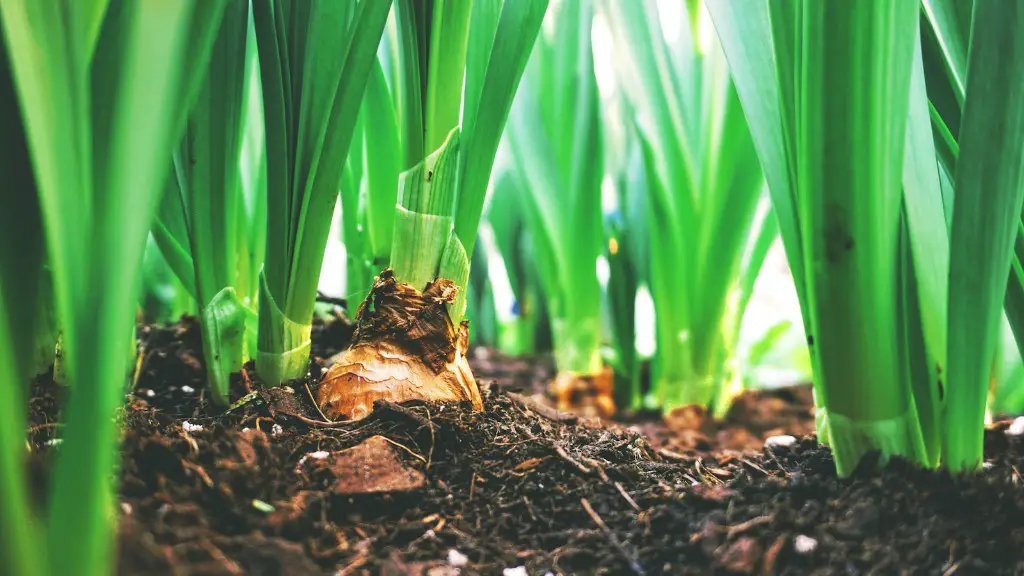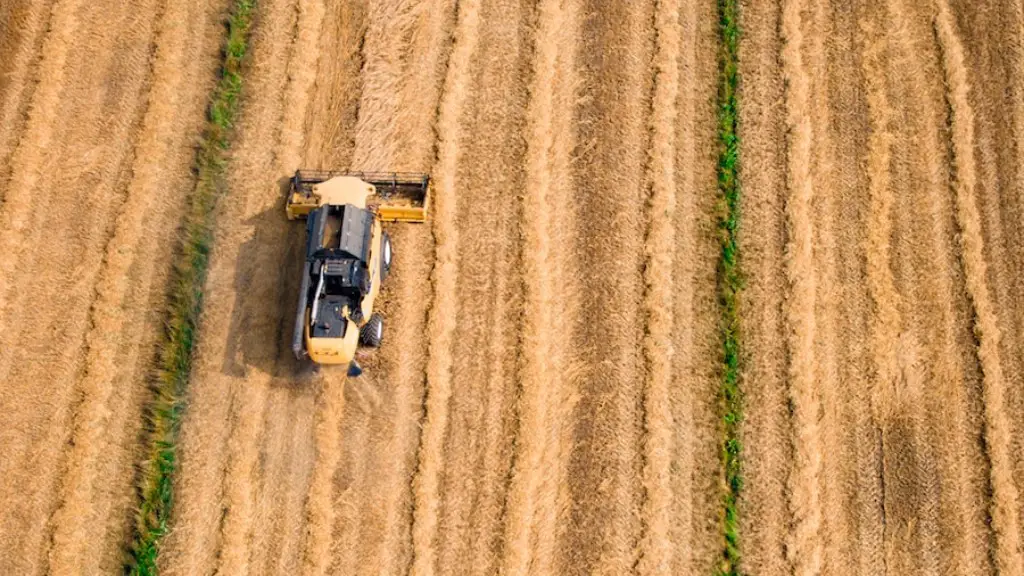Mathematics plays a vital role in the world of agriculture, and it can be employed in a variety of ways to help farmers and agribusinesses be as efficient and productive as possible. From calculating the measurements of areas to analyze the data from farming experiments, mathematical models and theories can be used to improve farm production and management.
First, mathematicians take existing data about soils, climatic conditions, plants, and other agricultural concepts and develop mathematical models. These models can help farmers and agribusiness owners create the best planting maps for their land. This ensures the highest yields and maximum profitability with the least amount of effort.
Mathematics can also be used to determine ideal carbon dioxide levels which helps increase agricultural production levels globally. Additionally, mathematics is used in the field of animal science, which is all about feeding animals in the most efficient way as possible, i.e. to maximize output while using fewer resources. The use of mathematics in this field helps farmers decrease the overall cost of animal produced products.
Further, mathematics can be applied in the area of crop management and crop protection. Mathematical models can be used to assess a variety of crop diseases and pests and develop the most efficient ways to protect them. This helps reduce any losses caused by crop loss and can ultimately improve a farmer’s production levels.
Finally, mathematics can be used to analyze soil data and assess fertility levels. By studying the existing chemical makeup of the soil, mathematicians can develop strategies to help farms improve crop yields. This again increases the overall productivity of a farm’s harvest.
Environmental Influence
Mathematics is also used to analyze environmental issues and their effects on crop production. By studying the climate and weather systems, mathematicians can create mathematical models that provide insights into the changing climate and its possible effects on the farming industry.
Mathematics is also used to analyze the effects of deforestation and other human activities on the environment. By understanding the effects of deforestation and other practices, mathematicians can develop models to help farmers and agribusiness owners make well-informed decisions on how to use natural resources more efficiently.
Mathematics also helps manage environmental issues such as air and water contamination from agriculture. Mathematical models can be used to identify pollutants in agricultural areas, helping to minimize their effects on the environment. This helps reduce the impact of farming activities on the environment and promote sustainable farming practices.
Finally, using mathematics, farmers and agribusiness owners can calculate the carbon footprint of their operations and develop strategies to reduce it. By studying the effects of climate change and other environmental issues, they can make the best decisions on how to reduce their overall carbon emission and be more sustainable.
Economic Measurement
Mathematics also plays an important role in measuring the economic performance of farming operations. By using mathematical models, farmers and agribusiness owners can accurately measure the profitability of their operations and develop strategies to maximize their profits.
Mathematics can also be used to assess the marketability of agricultural products. By analyzing market trends and consumer demand, mathematicians can determine the best methods of pricing and marketing products to ensure that farmers and agribusiness owners can better compete in their respective markets.
By studying labor costs and fuel usage, mathematicians can help assess the overall cost of farm operations and develop strategies to optimize them. By helping to maximize the efficiency of farm operations, mathematics provides farmers and agribusiness owners with the information they need to remain competitive and profitable.
Mathematics can also be used to assess the long-term impact of agricultural investments. By using mathematical models, businesses can project the future value of pests and diseases, assess the risk associated with them and make the best decisions on how to allocate their resources to maximize returns and minimize losses.
Finally, by using mathematical models, farmers and agribusiness owners can also assess the volume of supplies and the demand they will be facing in the future. This helps them plan ahead and make better decisions that will maximize their profits and minimize their risks.
Agro Technology
Mathematics can also be used to develop precision farming techniques. By creating mathematical models and algorithms, scientists and engineers can develop automated systems that can monitor soil health, crop growth, and pest activity. This helps farmers use their land more effectively and increase their crop yields.
Mathematics can also be applied to the development of remote sensing technologies such as drones and satellites. These technologies can help farmers and agribusiness owners monitor their land from afar and make timely decisions on how to manage their crops and livestock. The use of mathematics in this field helps farmers make well-informed decisions that can maximize their profits.
Mathematicians can also develop advanced artificial intelligence systems that can help farmers manage their crops and improve the efficiency of their operations. By combining mathematical models with machine learning algorithms, these systems can help farmers make the best decisions that are tailored to their individual needs. This helps to maximize their yield and reduce risk.
Mathematics is also being used to develop irrigation systems that can better manage water resources and optimize crop yields. By using mathematical models, engineers and scientists are able to create systems that can monitor and regulate the water flow and moisture levels of crops, maximizing their yield and minimizing the water usage.
Finally, mathematicians can use their skills to develop robotics and automation technologies for agricultural use. Robotic systems can help to reduce human labor and increase the speed and efficiency of production. This helps to reduce costs, ultimately improving the overall productivity of the farm.




